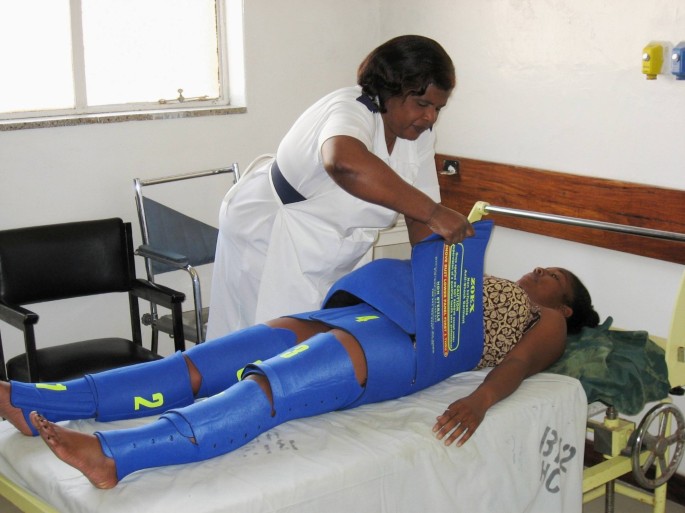Hypovolaemic shock is a serious medical condition that happens when the body loses a large amount of blood or other fluids quickly. This causes the amount of blood circulating in your body to drop, which means your organs do not get enough oxygen and nutrients to work properly. Without urgent treatment, this can be life-threatening.
You can ask your own question to a licensed healthcare provider here for free. It may take up to 7 days to get an answer. If you want a consultation in minutes, book now with Hope+ our premium and best health consultation service in Uganda.
What Causes Hypovolaemic Shock in Uganda?
- Heavy bleeding after childbirth (called postpartum haemorrhage)
- Injuries or accidents that cause bleeding inside or outside the body
- Ruptured organs like the spleen due to injury or illness
- Severe diarrhoea and vomiting which cause the body to lose a lot of water and salts quickly
- Large burns that cause fluids to leak from the skin
How to Recognise the Signs and Symptoms
If someone is losing too much blood or fluids, you might notice:
- Very fast heartbeat
- Rapid and shallow breathing
- Weak or missing pulse, feeling cold or clammy
- Dizziness or confusion
- Low blood pressure (feeling faint or collapsing)
- Pale or bluish lips and nails
- Skin that takes a long time to change back to normal colour after pressing (slow capillary refill)
- Feeling very thirsty or having little urine
How Doctors Classify Severity of Fluid Loss
Doctors use certain signs to decide how severe the fluid loss is. This helps them decide how urgent treatment should be.
| Indicator | Mild Loss (Class 1) | Moderate Loss (Class 2) | Severe Loss (Class 3) | Very Severe Loss (Class 4) |
|---|---|---|---|---|
| Blood loss (litres) | Less than 0.75 | 0.75 to 1.5 | 1.5 to 2 | More than 2 |
| % of total blood volume lost | Less than 15% | 15% to 30% | 30% to 40% | More than 40% |
| Pulse rate | Normal | Faster than 100 beats per minute | Faster than 120 beats per minute | Faster than 140 beats per minute |
| Blood pressure | Normal | Slightly low | Low | Very low or unmeasurable |
| Capillary refill | Normal (less than 2 sec) | Slightly delayed | Delayed | Absent (no refill) |
| Breathing rate | Normal | 20 to 30 breaths per minute | 30 to 40 breaths per minute | More than 45 breaths per minute or gasping |
| Mental state | Alert | Anxious | Confused | Unconscious |
| Urine output | More than 30 ml per hour | 20 to 30 ml per hour | 5 to 20 ml per hour | Less than 5 ml per hour |
How Hypovolaemic Shock is Treated
When hypovolaemic shock is suspected, treatment should start immediately in a health facility. Here is what happens:
- Stopping the bleeding if there is any obvious bleeding by applying pressure
- Positioning the patient lying flat with legs raised to help blood flow to vital organs
- Giving fluids through an intravenous (IV) drip to replace lost fluids and restore blood volume. These fluids are usually Normal Saline or Ringer’s Lactate and may be warmed before giving
- Monitoring vital signs like pulse, blood pressure, breathing, and urine output to check if treatment is working
- Blood transfusion if blood loss is severe or ongoing
- Surgery may be needed to stop internal bleeding or repair injuries
Special Considerations for Children
Children lose fluids faster than adults, so careful monitoring is very important. Signs like a fast heartbeat over 150 beats per minute, fast breathing, irritability or lethargy, and very low urine output show that the child is seriously affected.
| Indicator | Mild Loss (Class 1) | Moderate Loss (Class 2) | Severe Loss (Class 3) | Very Severe Loss (Class 4) |
|---|---|---|---|---|
| % of total blood volume lost | Less than 15% | 15% to 25% | 25% to 40% | More than 40% |
| Pulse rate | Normal | Over 150 beats per minute | Over 150 beats per minute | Over 150 beats per minute |
| Blood pressure | Normal | Slightly low | Low | Very low or absent |
| Capillary refill | Normal | Slightly delayed | Delayed | Absent |
| Breathing rate | Normal | Slightly increased | Fast and deep | Very fast or gasping |
| Mental state | Normal | Irritable | Lethargic | Comatose |
| Urine output | More than 1 ml per kg/hr | Less than 1 ml per kg per hour | Less than 1 ml per kg per hour | Very low or absent |
Important Advice for Patients and Families
- If you or a loved one has heavy bleeding or severe diarrhoea, get to a hospital quickly for urgent treatment.
- Do not try to give plain water or sugary drinks to replace lost fluids as these are not safe in shock.
- Follow the advice of healthcare workers carefully during treatment.
- Remember that hypovolaemic shock can get worse quickly without proper care.


